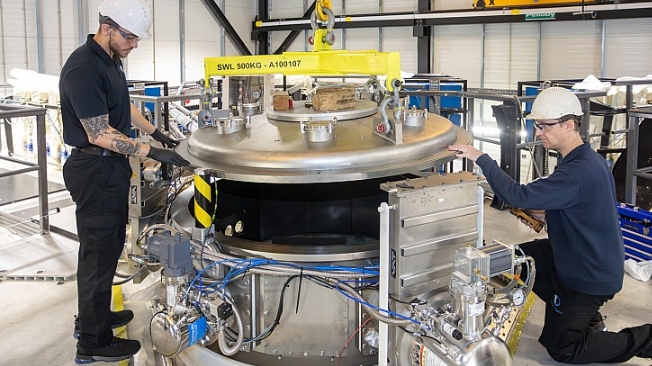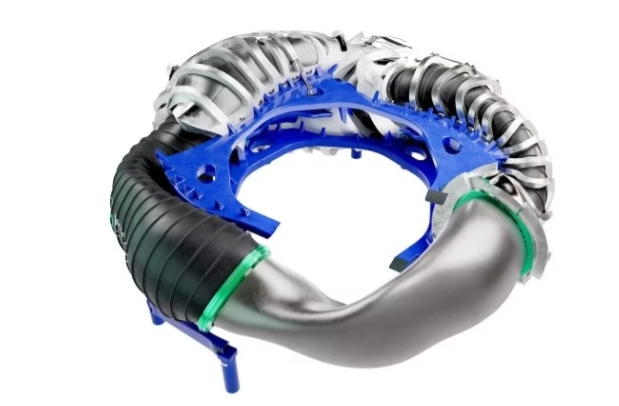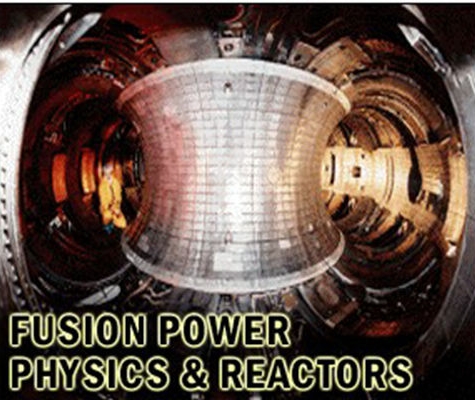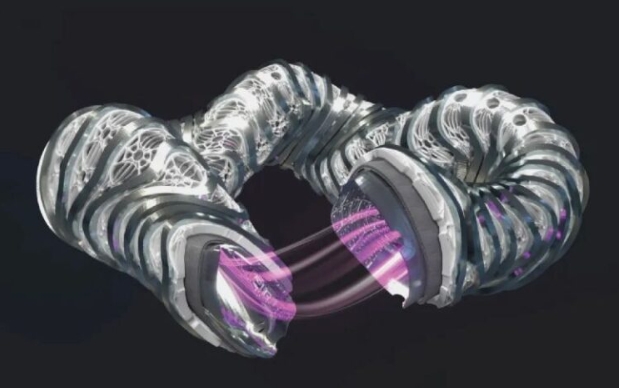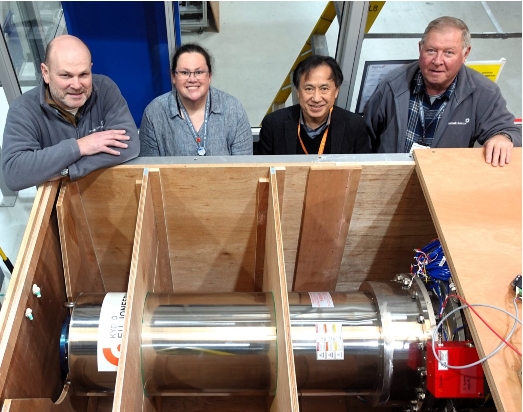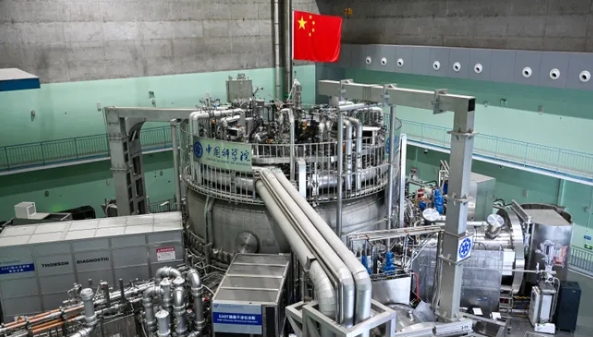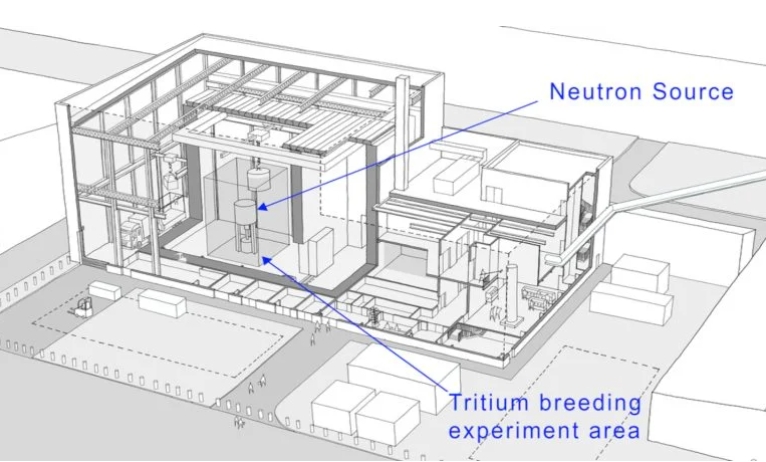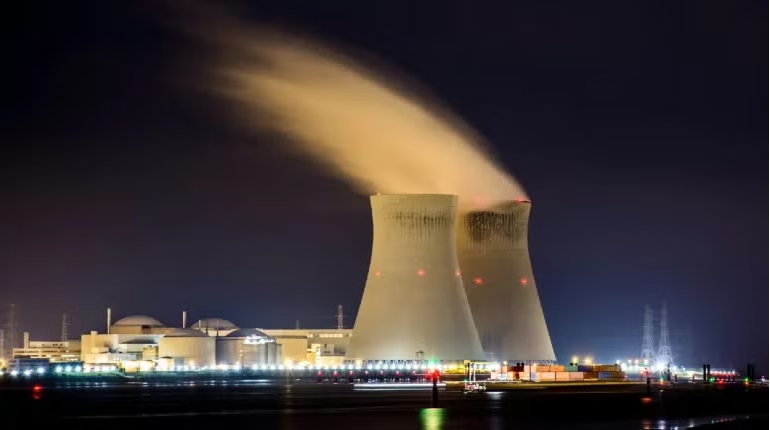As politicians and environmentalists prepare to discuss the world’s response to accelerating global warming at the upcoming COP26 climate change conference in Glasgow, there’s one technology that is still unsure if it has a seat at the table: nuclear fusion.
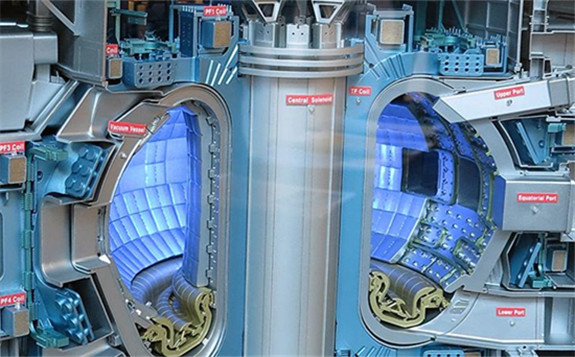 ITER exhibit. Photo : Wikimedia, IAEA Imagebank
ITER exhibit. Photo : Wikimedia, IAEA Imagebank
As the process that powers stars, fusion merges specific forms of hydrogen to create helium, unleashing vast amounts of energy. This comes without the risk of meltdown and the extremely long-lived radioactive waste generated by current nuclear fission reactors.
For decades, nuclear fusion has tantalisingly held out the promise of virtually unlimited power if only it could be harnessed. With a number of recent fusion breakthroughs in the private sector, some countries have started to include fusion in their green energy plans. Now the industry wants it taken seriously as a climate change solution at COP26.
“To have a conference about climate change, and the necessity for clean energy, and not to talk about the thing that could make the greatest impact, is just a joke,” said Melanie Windridge, UK director of the Fusion Industry Association. “I think fusion should be discussed.”
But green politicians and campaigning groups have long wanted to end backing for the biggest fusion project of them all, the prototype ITER reactor in the south of France. They argue the technology is an unproven and expensive distraction from energy saving measures that could be funded right now.
By mid-century, the point at which the EU aims to be carbon neutral on current timelines, fusion will not have made any serious contribution to energy production.
“From an ecological perspective, it’s not future proven. From an economic perspective, it’s inefficient,” said Rasmus Andresen, German Green MEP who earlier this month put forward an amendment to the EU’s 2022 budget calling ITER a “false climate solution.”
“The money we are spending on projects like ITER could be used for other developments” such as existing renewable energy sources and the development of hydrogen as a fuel, Andresen said.
Fusion skeptics point to decades of unfulfilled promise and repeated delays and cost overruns at ITER, which is funded by a 35 country consortium including the US, EU, China, Russia, India and the UK. The US has been a particularly skeptical partner, at one point suspending payments in 2008. And last year, the European Court of Auditors warned of further cost increases and delays.
“The running gag is that nuclear fusion is always fifty years away,” said Jan Haverkamp, nuclear energy specialist at the lobby group Greenpeace, which has opposed fusion since at least 2005.
“Fusion cannot help in a zero carbon strategy,” Haverkamp said. “If it is ever going to be done, it will be too late for that. There will be no economical nuclear fusion by 2050, I can guarantee you that.”
Carbon targets in 2050
Even advocates of fusion don’t dispute this. The technology is “questionable as a contribution” to carbon targets in 2050, acknowledges Laban Coblentz, head of communications at ITER.
ITER is not due to reach the full power stage of its operation until 2035. And it is merely a prototype; a successor will have to be built that is capable of converting any energy it produces into electricity.
“It’s true that fusion is not really on track to be available at large scale by 2050,” said Greg de Temmerman, who worked as a coordinating scientist at ITER from 2014 - 2020, and is now managing director of Zenon Research, a consultancy that forecasts long-term trends.
The UK is funding a fusion reactor, the Spherical Tokamak for Energy Production, to the tune of £222 million. This aims to be operational by the 2040s, but it too will only “pave the way” for commercial fusion power.
Even if fusion power became a commercial proposition before 2050, with alternative energy technologies like wind and solar increasing in scale at most by 40 per cent a year, roll-out of fusion energy would initially be slow, according to de Temmerman. “There’s no reason to believe fusion would be any faster,” he said.
However, several privately funded advances in fusion energy in the past few months have kindled hopes the technology could arrive much earlier.
Earlier this month, a Massachusetts Institute of Technology project announced it had broken records with the power generated with a new type of super-heated magnet, overtaking ITER, which uses an older generation of magnets.
“If you can create higher magnetic fields, you can create a better trap for your fusion fuels, so you don’t need to build them so big,” said Windridge. The MIT reactor, developed with a start-up called Commonwealth Fusion Systems, hopes to have a demonstration device working by 2025.
Most of the private companies that have entered the fusion game are working towards energy breakeven this decade, with the intention of generating electricity in the 2030s, said Windridge. “I think people are very optimistic in fusion,” she said. “You have to be, you’re trying to do something incredible, you’re trying to build a star.”
The MIT reactor is “a very promising avenue,” said de Temmerman. “But - and that’s what press releases tend to forget - is that it’s only one step on the way.”
But even if fusion still isn’t generating electricity in serious quantities by 2050, advocates say it is still worth investing in now, for the grim reason that they doubt the world will have decarbonised by mid-century.
Whatever the picture is in 2050, “most likely you will still need innovation in energy technology after that,” said de Temmerman.
Even if we have to wait until the 2060s, fusion will still be useful then, said Windridge. “We need to find a way for us all to have sustainable abundance, and fusion gives us that,” she said. “So it’s worth putting the money into something that’s going to down the track actually solve the problems, as opposed to scratching the surface and perhaps never getting there.”
Although green groups do worry about the actual environmental impact of a working fusion reactor – its use of rare earth metals, for example – this is not their main concern.
Policy landscape
Fusion does create a certain amount of radioactive waste, but it is relatively unproblematic, as it remains harmful for around a century, rather hundreds of thousands of years, as with fission, de Temmerman said. And there is no risk of a meltdown because the reaction can be ended by turning off the magnets or lasers used to keep it in place.
The policy landscape when it comes to fusion is “changing quite fast”, said de Temmerman. A number of countries are now integrating it into green strategies.
Last year, the UK said it wanted to become the “first country in the world to commercialise fusion energy technology,” explicitly including the technology as a key plank of its plans for a “green industrial revolution.”
Earlier this year, an expert committee advising the UK government on technological regulation recommended a relatively light-touch approach to fusion, saying the “adoption of a fission based regulatory approach to fusion” risked being “disproportionate, creating uncertainty and substantially increasing costs.”
“The UK is really leading the way,” said Windridge.
Japan also includes nuclear fusion as part of its 2050 zero carbon strategy, unveiled last year. As well as support for ITER, Japan has constructed a magnet-based reactor in Naka, along with European partners.
Canada has also pumped money into commercial fusion companies, touting the technology as a source of clean energy.
But whether fusion will play a role in COP26 is still unclear - Science|Business did not get a response from the organisers of the conference to the question of whether fusion will be on the agenda
